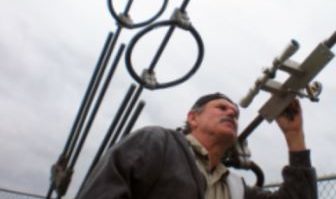Experts Talk About Common Sense in Protecting Your Safety and Health
Some accidents are more serious than others.
If your computer crashes, you just call someone to fix it. But if an employee or even a contract engineer falls off your tower or is electrocuted at your station, a long line of unpleasant consequences may ensue, beyond the human suffering. Among them are potential fines, time-consuming and expensive lawsuits and the possibility of further targeted inspections from the Occupational Safety and Health Administration.
Mark Perriello is the director of safety and health for Viacom. It is his job to anticipate dangerous situations.
“If you look at the Bureau of Labor statistics for all industries in 1999, about 6.5 percent of the population at work had some type of injury,” Perriello said. “Radio is not as risky as construction sites, but it’s probably a 5 on a scale of 10.”
One of the big areas of concern at broadcast facilities is electricity. Perriello said people should be trained for the specific voltages with which they will be working.
“We also look at what we call lockout/tagout,” he said. “This means that power is shut down and a lock is put onto the breaker or switch so someone can’t turn it on accidentally while the engineer is working.
“Many assume that if the power is merely shut off, they are safe. They are wrong, because anyone could walk into that maintenance area and turn it on by accident.”
Ron Erickson is a former chief engineer who sells equipment under the name Erickson Broadcast Services. He stressed the need to work with a buddy any time lethal voltages are involved.
“I never open a transmitter without someone right there with me,” he said. “It’s very important, even at 3 a.m. The industry is doing itself a great disservice by stretching staffs too far, making it difficult to maintain this rule.”
Erickson described the trusty tool that some refer to as the “Jesus stick.”
“That’s a grounding rod,” he said. “The stick is kept inside the door of the transmitter. One end goes through a grounded cable and the other end has a metal tip. It de-energizes the capacitors, which can still have a lot of voltage even when the power is off.”
Perriello emphasized that there is more to be concerned with than just coming into direct contact with power.
“Even as low as 480 volts, you can get arcing,” he said. “An arc can create a tremendous flashburn reaching thousands of degrees. This can happen primarily at the tower or at the transmitter.”
All those familiar places
Perriello of Viacom studies areas not designed for human occupancy. This can include wiring trenches, equipment closets or spaces under floorboards and between walls.
“In those cases, OSHA has a ‘confined space’ standard,” he said. “Before someone goes into that area, he/she must test the air, ventilate the area and, again, make sure no power can be turned on in that space while someone is in there.”
While it is impossible to anticipate every contingency, OSHA has developed preparedness procedures for most weather, fire and medical situations. These rules do not have to be part of the station public inspection file, but employees need to be familiar with them.
“What do you do in these cases?” said Perriello. “Who is in control? Which critical employees will stay on the air at the station and which will vacate, and how do you keep the remaining people safe and out of the way of emergency workers?”
Perriello said about 80 percent of the safety rules that apply to radio stations could apply to any business. But the other 20 percent are important to understand, too.
“At a radio station, one might encounter lead solder, isopropyl alcohol or paint,” Perriello said. “There could be flammable materials such as acetone near where a spark of static could start a fire. People also need to know the possible reproductive dangers of inhaling any chemicals.”
Most states have a “right to know” law, which requires that employees be told how hazardous or reactive materials are. It is up to the employer to collect the names of these substances, identify them, receive from suppliers a material safety data sheet and make this information available to personnel. If someone has to make an emergency trip to the hospital, it is helpful to know what he or she was exposed to.
“People buy things like lubricants or paint, use a portion and store the rest,” Perriello said. “This can not only be a hazard, but a disposal problem as well. Those Styrofoam signs from a remote broadcast will release soot and carbon monoxide when burned, for example.”
Fire suppression is a big item in any facility, as is the danger of people falling from ladders, towers or other structures.
Look ouuuuuut!
“If you’re asking someone to climb higher than six feet, even if he/she is not one of your employees, that person must follow OSHA guidelines, because if it occurs on station property, the owner could be held accountable,” said Perriello.
“Last year in North Carolina, six or eight people died falling from towers, and now the state is working on a standard that could be adopted throughout the country for tower work.”
Station remote vehicles with telescoping antennas always are in danger of touching power lines. Perriello said that there are safety procedures involving first-aid training and equipment.
“OSHA sets minimum standards, but we usually go beyond that,” Perriello said. “An example would be that, here within our company, we require people working on a roadway to use orange safety vests and plastic cones around the vehicle.”
He said safety problems come down to human nature. People always think accidents will happen to someone else.
“A guy will say, ‘I’ve been working on towers for 10 years and I haven’t fallen yet,'” said Perriello. “How dumb is that?”
Another factor that stations need to be aware of is the way OSHA looks at consolidation within the radio industry.
“Let’s say your company has stations in multiple markets and a workplace accident occurs in one city,” Perriello said. “If another accident happens in another city, OSHA could look at it as a ‘repeat’ incident for your company.
“Even if the manager in the second city is unaware of the first incident, he could be liable for repeat inspections and larger fines.”
And having at least one employee at each station know CPR is good common sense, as well as a part of OSHA guidelines.
“If someone’s heart stops, you have about four minutes before irreversible brain damage can occur from lack of oxygen,” said Perriello. “Be prepared for any medical emergency.”
Resources
A useful resource is the ninth edition of the “NAB Engineering Handbook,” available through www.nab.org. It has sections devoted to electrical shock, tower safety, OSHA rules and disaster management. NAB also offers several “lockout/tagout” safety signs for purchase.
The site www.osha.gov offers timely information on anthrax and disaster plans.
SBE suggests several links including www.engsafety.com for articles by Mark Bell and www.lightningsafety.com, run by the National Lightening Safety Institute.
The Internet home of the National Fire Protection Association is www.nfpa.org, and www.natehome.com is where to go for information from the National Association of Tower Erectors.
Ken R. is a former broadcaster whose only on-the-job disaster occurred when he played a record on the air that the owner’s wife hated.











